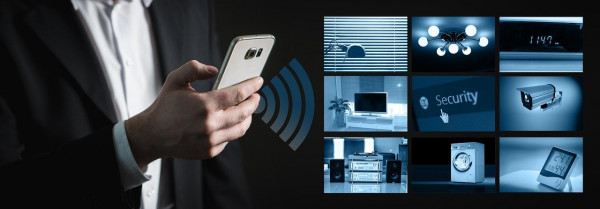Technology And Home Interiors: 10 Ways How You Can Make Them Work

When you are sorting out the interior of your home, technology is both one of your greatest obstacles and one of your greatest helpers. There are quite a few things you have to consider if you have a high-tech home, from the size of the technology to its proximity to power outlets.
It can be a lot to take in, especially if you are trying to make your home look good. Fortunately for you, however, there have been people studying this kind of interior design for years.
In fact, interior design disciplines go back to antiquity and before. In the times of Socrates in the West and Confucius in the East, people were discussing how to make their homes look good.
And not just look good but feel good as well. Designing the interior of your home is as much about function as it is about form. So, let’s get started talking about how you can integrate your technology into the interior of your home, using everything from Feng Shui to indoor cameras.

Start with the Entryway
All studies of aesthetic design start with the entryway. It is the first thing you interact with in the room, and oftentimes the last thing you see before you leave. That means designing the rest of the room as a pathway to and from the entryway.
Technology like smart doorbells can help you here, as can motion controlled lights.
Create Pathways
This is the natural follow-on from building your room out from its entrance. What you are wanting to do here is orient your technology so that you can easy access what you need to access without obstructing the entryway. This is harder than you might think.
Usually, it involves making sure no power chords overlap with the entryway. Additionally, you do not want a desk or chair to be too close, much less a computer or monitor.
Distance Workstations
Whether you are putting together an office or a kitchen, keep your workspaces as far away from the entrances as possible. The reason why is that it allows the room to feel much bigger.
If your office has a computer chair right next to the entrance, then it will never take you more than one stride to get into that computer chair and start working. By just placing the chair a little further away you will feel as though the room is much bigger and more easily accessed.
Face Workstations Inwards
If you go to any computer lab in any school and almost any library, you will see computers lined up against the wall. This way of orienting the technology means that people frequently stare at the walls while they use that technology. Do this for too long and your mood will deteriorate.
It is much better for you to face your workstations inwards. This can be done with a kitchen island, or in an office by just putting your chair against the wall.
Keep Security Features High Up
Let’s step into more practical territory now. Security features are not going to be included in any books on balancing Feng Shui, and they were rarely (but surprisingly, not never) included in reading on how to deal with one’s humors. But they are critical for keeping your home safe now.
The best first step is to put your security features high up off the ground, whether they are cameras or motion sensors.
Secure Different Entryways
While we are on the topic of security, your security should prioritize detecting things coming in through entrances. The entrances for you will be different than the entrances for burglars, however. Keep track of windows as well as doors, especially low windows.
Know Your Electricity Plan
This tip is both for organizing the normal technology and the security technology of your interior. Every room is going to be easier to organize if you know not only where each power outlet is, but also which circuits are connected to what walls.
For instance, you might have an alarm on the ceiling that is connected to the same wall as your computer. This can create power problems, so if that is the case then it is better for you to move your computer to plug it into a different wall.
Employ Feng Shui
While Feng Shui relates to greater Chinese spirituality, it is primarily practiced in the United States as a method of creating harmonious indoor spaces. The best way to implement this is to think of different components of an interior as different elements.
Computers grow warm with use, making them fire-aspected. In order to balance them out, you should have something water-aspected like a bed to balance them out. Also, be careful not to put too much wood-aspected furniture or plants in the same space, or it will feel stuffy.
Consider the Humors
Similarly, you can think of each piece of technology and furniture as stimulating to the humors. High stimulation tools like computers are sanguine, which means they must be balanced out by low stimulation drapes and bookshelves. As before, the goal is balance.
And of Course, Watch out for Temperature Issues
One of the most common problems people face with rooms heavy in technology is the amount of heat a lot of technology in close proximity produces. You will want an air conditioning unit or independent cooling system in a room with more than three electronic devices.
Also, try to space them out if you can. This is part of the reason why elevating some of them can be so good for your environment, as it makes use of vertical space.
Conclusion
Interior decoration is actually a pretty deep field. There is a reason it is its own profession, with people paid millions of dollars to organize company offices and celebrity homes.
But all the same, you do not need to be a professional (or make use of professional equipment) in order to make a harmonious space.
